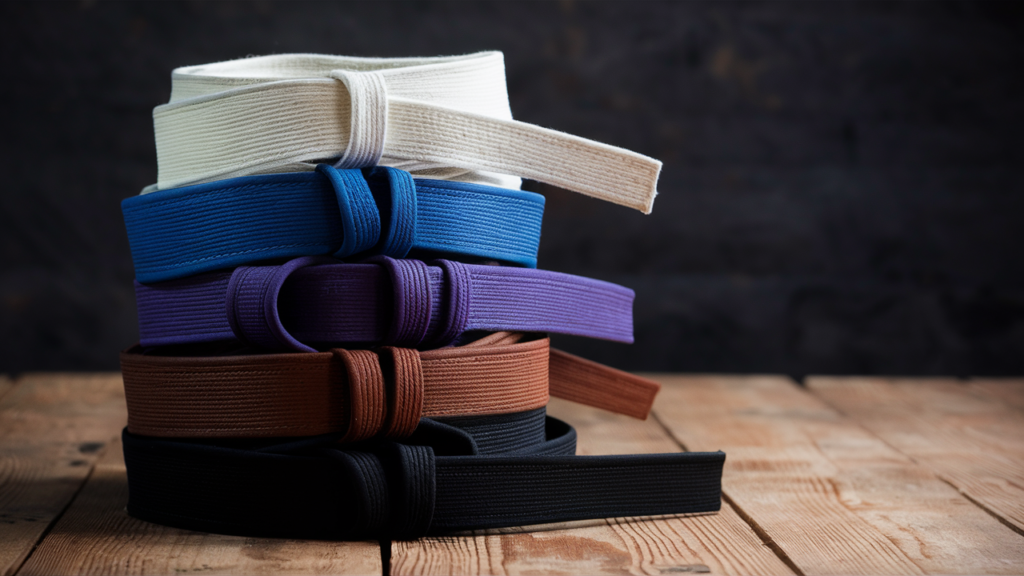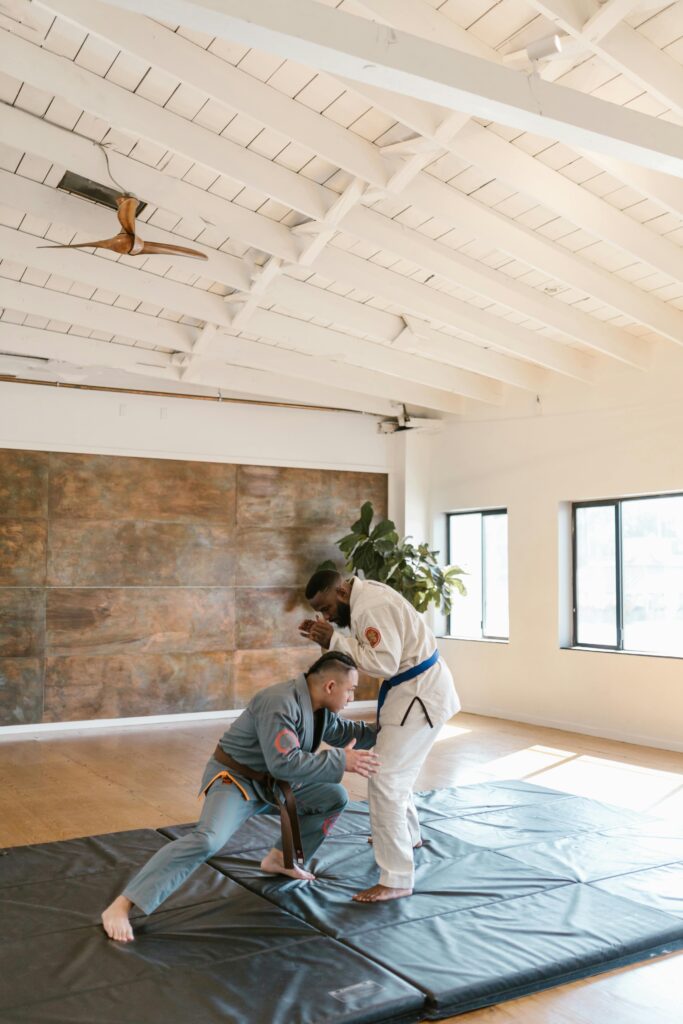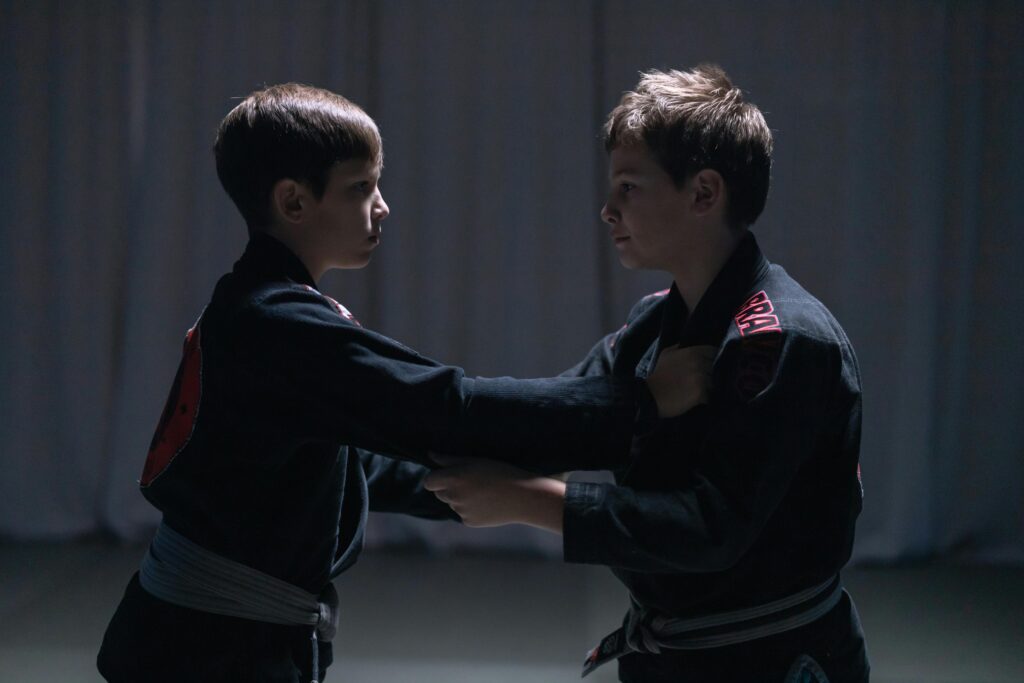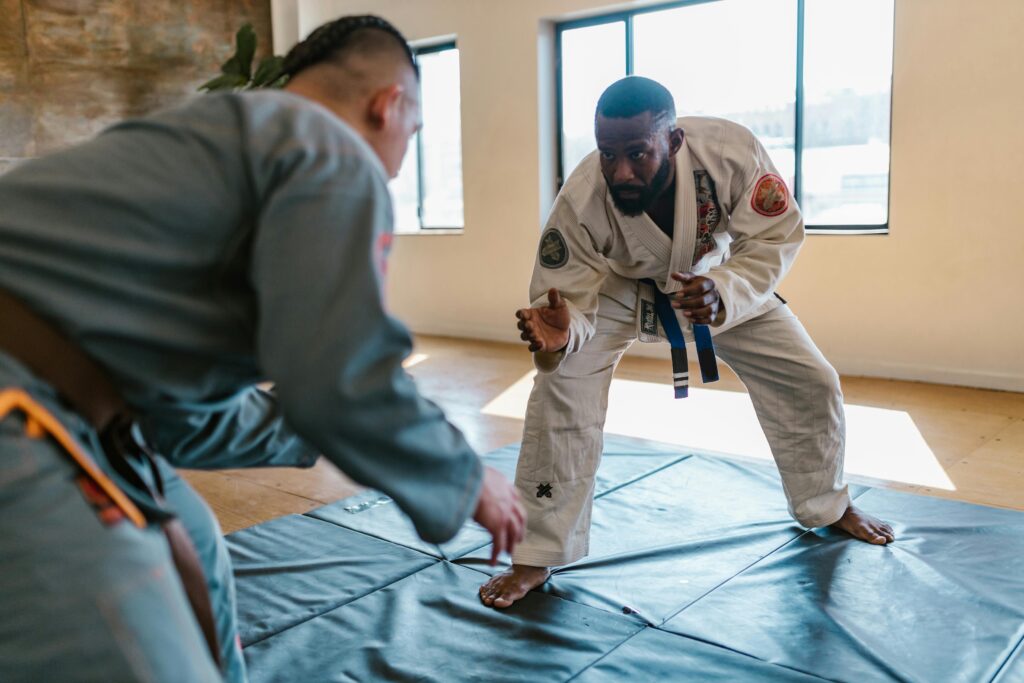Understanding the Jiu-Jitsu Ranking System and Belts guides you through the intricate maze of colored belts that signify a practitioner’s journey in this revered martial art. You’ll discover the history behind jiu-jitsu rankings, learn about the significance of each belt color, and uncover the requirements for advancing through the stages. Delve into the average time it takes to progress from white to black belt and understand the personal growth and challenges encountered at each level. The article also sheds light on the differences between Brazilian and traditional Japanese jiu-jitsu systems, provides insights into the promotion process, and debunks common misconceptions. Ultimately, it offers practical tips for progressing through the ranks, emphasizing the importance of technique, consistent training, and the continuous pursuit of knowledge on your jiu-jitsu journey. Have you ever wondered why someone in a martial arts class is wearing a different colored belt than another? If you’re new to Jiu-Jitsu or martial arts in general, the colors and rankings can feel confusing at first. But don’t worry, you’re not alone in feeling this way. In this article, we’re going to dive deep into the Jiu-Jitsu ranking system and belts to help you better understand what each belt represents, the journey of progression, and the significance behind these colored pieces of fabric.
- Advertisement -

Introduction Jiu-Jitsu Ranking System
Brief History of Jiu-Jitsu
First things first—let’s start with a bit of history. Jiu-Jitsu, particularly Brazilian Jiu-Jitsu (BJJ), has roots that stretch back to Japan. The martial art was then adapted and refined in Brazil, largely credited to the Gracie family. Over decades, it has become a staple in mixed martial arts and is now practiced all around the globe.
Importance of the Ranking System in Martial Arts
Why all the fuss about belts? Well, the ranking system serves multiple roles. It’s a way to recognize your progress and skill level, something that can be especially motivating when you’re slogging through those tough training sessions. It also helps maintain order and respect within the dojo, ensuring that both novices and experienced practitioners know their place and role.
- Advertisement -
The Jiu-Jitsu Belt Colors
Belts in Jiu-Jitsu aren’t just fashion statements—they tell a story. Each color represents a particular stage in your journey.
White Belt
Ah, the white belt. This is where everyone begins. Think of it as a blank canvas, symbolizing innocence and the start of an exciting new journey. As a white belt, you’ll be focused on grasping basic techniques and understanding the fundamental principles of Jiu-Jitsu. You’ll tap out a lot—and that’s okay!
- Advertisement -
Blue Belt
After you’ve spent some time as a white belt, you can finally graduate to a blue belt. This is where you start to feel like you know a thing or two. Your defense mechanisms improve, and you begin to roll without constantly thinking you’re drowning.
Purple Belt
Welcome to the intermediate phase. As a purple belt, you will start sharpening your techniques and maybe even develop a few signature moves. The purple belt phase is a significant leap where your game becomes both defensive and offensive.
Brown Belt
With the brown belt, you’re inching closer to mastery. This is a period of refining, where you polish your skills, and your techniques become razor sharp. You’re preparing for the final ascent to the black belt.
Black Belt
Reaching the black belt is like climbing to the top of the mountain, only to find another range ahead. It symbolizes not just technical proficiency, but also a deeper understanding of the art. You’re expected to contribute to the community, perhaps by teaching or mentoring others.
Red Belt (Coral Belts and Beyond)
Ah, the red belt, the stuff of legends! Reserved for those who’ve spent their lives practicing and contributing to Jiu-Jitsu. It symbolizes great wisdom and knowledge. Coral belts often refer to red and black, red and white belts, which signify higher stages of mastery before the red belt.

Requirements for Each Belt Level
So, how do you actually progress through these belts? There are three main factors: time commitments, technical skills, and mental aspects.
Time Commitments
While it varies from person to person, generally, you can expect to spend years between each belt level. Institutions may have minimum time requirements to ensure that you’re not just breezing through the ranks.
| Belt | Average Time Spent |
|---|---|
| White | 1-2 years |
| Blue | 2-4 years |
| Purple | 4 -6 years |
| Brown | 6-8 years |
| Black | Varies (minimum 10 years total) |
Jiu-Jitsu Belt Progression Timeline
White Belt
0-2 years
Blue Belt
2-4 years
Purple Belt
4-6 years
Brown Belt
6-8 years
Black Belt
8+ years
Note: Timeline is approximate and may vary based on individual progress and dedication.
Technical Skills
Each belt comes with its own set of required techniques. For example, white belts focus on the basics while black belts are expected to know and demonstrate advanced techniques. These skills are often tested through formal exams.
Mental Aspects
Equally important are mental skills like discipline, focus, and sportsmanship. Martial arts are as much about developing your character as they are about physical prowess.
The Journey from White to Black Belt

Average Time to Progress
On average, it can take upwards of 10 years to achieve a black belt in Jiu-Jitsu. Some people might rush and try to accomplish this faster, but remember—it’s the journey, not the destination, that really matters.
Challenges at Each Level
Each belt level comes with its own set of challenges. As a white belt, you might struggle with basic submissions. As a blue belt, maybe it’s maintaining your stamina during rolls. Each challenge you overcome prepares you for the next level, and each setback is just a lesson in disguise.
Personal Growth and Development
Throughout this journey, you will see significant personal growth. You’ll develop not just as a fighter, but as an individual. Overcoming the physical and mental challenges of Jiu-Jitsu can provide you with the persistence and resilience needed in other areas of life.
Differences Between BJJ and Traditional Jiu-Jitsu Belt Systems
Brazilian Jiu-Jitsu (BJJ) System
Brazilian Jiu-Jitsu focuses more on ground fighting techniques. The belt system here is structured to gauge your proficiency in these specific areas.
Japanese Jiu-Jitsu System
In contrast, traditional Japanese Jiu-Jitsu often includes a broader range of techniques including throws, joint locks, and even strikes. The belt progression may also differ slightly.
Key Distinctions
In essence, the main difference lies in the focus and specialized techniques. BJJ is more about leverage and ground control, whereas Japanese Jiu-Jitsu encompasses a more varied set of skills.
Promotion Process
Testing Methods
Be prepared—belt promotions can be rigorous. You’ll often be tested on your grasp of techniques, your ability to perform under pressure, and your overall development as a martial artist.
Instructor’s Role in Promotions
Your instructor plays a vital role in your promotions. They observe you in class, look at your commitment, and your grasp of techniques to determine if you’re ready for the next level.
Formal Ceremonies vs. Informal Promotions
Some academies hold formal ceremonies where students are awarded their new belts in front of their peers. Others might prefer informal promotions where the instructor has a quiet conversation with the student and awards the belt.
Benefits of the Belt System

Motivation and Goal-Setting
The different belts serve as milestones that keep you motivated. They provide clear, achievable goals to work towards, making the journey both challenging and rewarding.
Tracking Progress
Your belt color also provides a tangible way to track your progress. It’s not just about feeling like you’re getting better; it’s about having a concrete recognition of that improvement.
Respect and Hierarchy in the Dojo
The belt system helps maintain respect and hierarchy within the dojo. Higher belts are mentors to lower belts, fostering a sense of community and mutual respect.
Common Misconceptions About Jiu-Jitsu Belts
Belt Color vs. Actual Skill Level
One common misconception is that belt color exactly equals skill level. While it’s generally indicative, it’s not an absolute rule. There are plenty of skilled practitioners who might not have the time to commit to belt promotions.
The “Belt-Chasing” Mentality
Another pitfall is the so-called “belt-chasing” mentality. Focusing solely on achieving the next belt can make you miss the essence of training—actual learning and self-improvement.
Importance of Continuous Learning
Never think that a belt is the end goal. Continuous learning and improvement are what truly define a martial artist. Always strive to learn something new, irrespective of your belt color.
Tips for Progressing Through the Ranks
Consistent Training
The most obvious advice is also the most true: consistency is key. The more you train, the faster you’ll progress. But consistency doesn’t mean monastic dedication—it just means showing up regularly.
Focus on Technique Over Strength
Jiu-Jitsu is often described as the “Gentle Art.” That means technique > strength. Focus on mastering techniques rather than overpowering your opponents.
Embracing the Learning Process
Don’t rush—take your time to enjoy the journey. Embrace the ups and downs. Each obstacle is an opportunity to learn and grow, both as a martial artist and as an individual.
Conclusion
Recap of the Jiu-Jitsu Belt System
So there you have it—a comprehensive breakdown of the Jiu-Jitsu belt system. From white to black, and maybe one day, red, each belt represents a unique stage in your martial arts journey.
Encouragement for Beginning or Continuing the Jiu-Jitsu Journey
No matter where you are on your Jiu-Jitsu path, stay motivated and keep pushing forward. Whether you’re just starting out or you’re eyeing that next promotion, remember—the journey is just as important as the destination. Keep rolling and never stop learning.
See also: Dricus du Plessis: South Africa’s First UFC Champion and His Impact on African MMA
Further Learning Materials
For practitioners looking to deepen their understanding of the Brazilian Jiu-Jitsu belt system and accelerate their progress, several additional resources are available:
- BJJ Fanatics and Grapplearts: Comprehensive video libraries featuring techniques and strategies from world-class instructors.
- “Jiu-Jitsu University” by Saulo Ribeiro and “Mastering Jujitsu” by Renzo Gracie: Highly regarded texts covering techniques and principles for all belt levels.
- IBJJF.com: Information on upcoming tournaments, allowing practitioners to test their skills and gain valuable experience.
- Kicksite: Tools for tracking attendance, belt ranks, and student progress, valuable for both instructors and students.
- The Jiu-Jitsu Times Podcast and BJJ Brick: Insights, interviews, and training tips from experienced practitioners.
These resources can supplement regular training, providing additional perspectives and knowledge to support a practitioner’s journey through the belt ranks.





